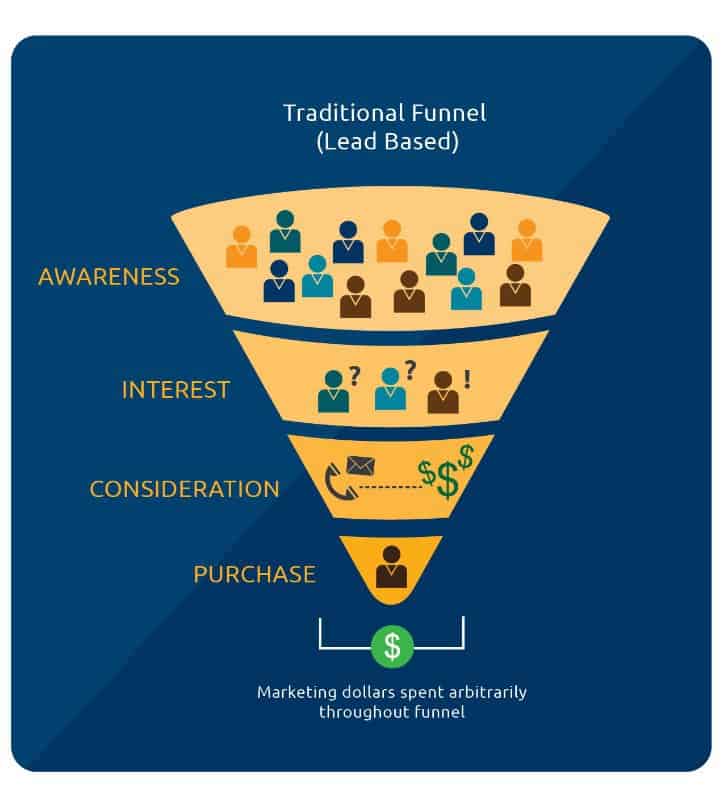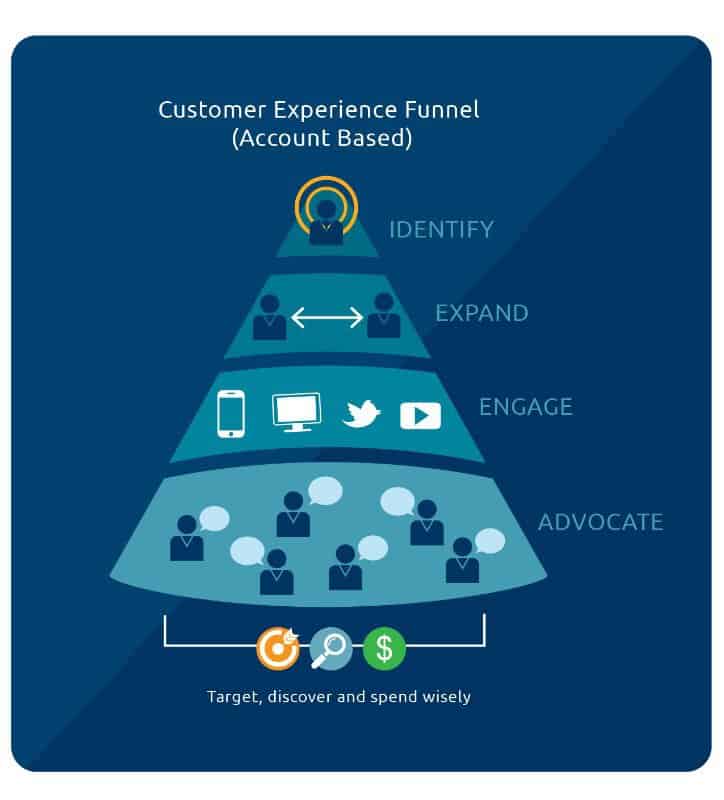The MarTech market is growing faster than most anticipated. In fact, Scott Brinker’s annual Marketing Tech Landscape Supergraphic grew by 98% to 1,876 vendors between 2014 and 2015. Unfortunately, most marketers, myself included, are still not sure where to start.
At this year’s MarTech Conference, I met Rishi Dave, CMO at Dun & Bradstreet, and had the opportunity to interview him to learn more about his marketing stack. Our conversation inspired me to think about “customer experiences” as a stack and the need for marketers to look beyond the “products” stack. Let me be clear that I am no Scott Brinker, but this is my humble effort to help myself and other marketers who are overwhelmed with too many products in the MarTech space.
My search began with a set of questions like “what tools do I need to help drive my business forward?” At the same time, I started looking at the traditional sales and marketing funnel, but was completely stumped because I couldn’t build a martech stack to support my business goals. Here’s why:
The traditional B2B sales and marketing funnel is lead-based, i.e. it is based on the fact that leads come in the top and follow a linear path from awareness through purchase. It starts with an untargeted, broad approach with one primary goal: to capture as many leads as possible at the top and drop them in the sea of email communication. It totally ignores deeper engagement at each level and more importantly, it ignores the basic psychology of customers and treats them as numbers. In complete despair, I flipped the funnel on its head in search of answers — and to my surprise, I was presented with a way to align my business goals with the funnel.
The #FlipMyFunnel Revolution
Allow me to propose a different model that I am calling the #FlipMyFunnel revolution, which starts with the best-fit customers. Take a look at the flipped customer experience funnel in the following diagram:
Now as a CMO, I can start building my customer experience stack for each step described below:
1. Identify – First, we need to find our best-fit customers. That might seem like a daunting task, but trust me, it’s not as hard as you think. There are plenty of amazing technologies out there today — like SalesLoft, Data.com from Salesforce,RingLead, LinkedIn Navigator, and a few others — that easily allow us to identify a list of companies that fit our best-fit customer criteria. This becomes our target list of companies and roles that we want to get our message in front of. Why start anywhere else?
2. Expand: This is a tough one because most marketers are so stuck in the lead-based marketing world that it’s not quite clear how we can expand our reach to people and influencers in our target list of companies. In full disclosure, I am the co-founder and CMO of Terminus, which specializes in the account-based marketing space and helps marketers target influencers within the accounts they would like to reach. But there are other companies like Demandbase that are making this possible for marketers today. LeanDataInc is taking a completely new approach and makes it possible within Salesforce CRM to pull everything under accounts allowing you to start account-based selling.
3. Engage: This is where content and channels come to life. Think about email, webinars, e-books, targeted ads, videos, events, and any programmatic or automated ways you use to get in front of your target audience (yes, your targetaudience, not just anyone and everyone in the ecosphere like the traditional funnel). This is typically the first step in the traditional funnel and how most marketers operate.
This step is by far the broadest since there are so many ways to engage your prospects. Used most predominantly are Marketing Automation Platforms (MAPs) and account-based marketing, which Megan Heuer, Vice President and Group Director at SiriusDecisions, has indicated is the next big thing. Scott Brinker stated the following in his recent post: “Companies like Demandbase and Bizo (acquired by LinkedIn and synthesized into LinkedIn Business Solutions) were some of the martech pioneers to power account-based marketing practices, but a new generation of startups has recently appeared, including Engagio(founded by Jon Miller, previously the co-founder of Marketo) and Terminus(funded by one of the co-founders of Pardot).”
4. Advocate: Turning your customers into raving fans is one of the most underutilized strategies of all time in today’s marketing, despite the fact that retaining current customers is far cheaper than bringing in new ones. Most marketing teams have ZERO budget to spend on existing customers (yes, zero). In the so-called modern era of revenue marketing, the revenue is only looked at from a new customer perspective and not from existing customer base, which is by far the greatest opportunity to drive demand and buzz around your own products. Salesforce does this beautifully with events like Dreamforce and the Salesforce One Tour all around the world, but you can also turn customers into advocates using tools like Influitive.
So there you have it — a way to start thinking about building a true “customer experience” stack (or as I like to call it, the #FlipMyFunnel revolution), and a few recommendations for each step in the new and improved funnel.
Check out the first ever customer-experience stack below.
Tip: To enlarge the graphic, just click here.
What are your thoughts on the #FlipMyFunnel revolution? What products would you add to the customer experience stack? Start the conversation in the comments!
Learn more about ABM and the T.E.A.M. account based marketing framework:
- Target – Create a target account list for ABM
- Engage – Account based advertising
- Activate – Account based sales enablement tools
- Measure – Account based analytics
See the full Terminus account based marketing platform.
Check out some account based marketing examples.
Learn more about account based marketing services.
Terminus: an account based marketing software company.


